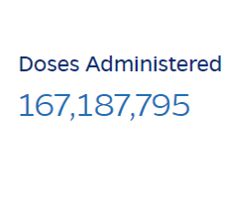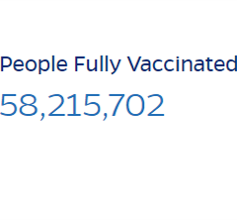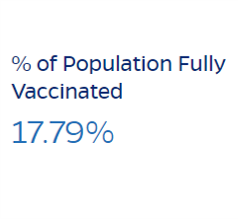The Pandemic Is Over, Right?
- stanhwu2
- Apr 7, 2021
- 4 min read
Source: Johns Hopkins Coronavirus Resource Center
A little over a year since the lockdowns began, it's over, right? There are many of us asking this question now that the vaccines are becoming more readily available and new cases have plateaued or are decreasing. Most, if not all, states have begun reducing restrictions and allowing more activities involving groups and/or indoor settings.
Before we start claiming victory over a virus that easily spreads from person to person, let's pump the brakes a bit. There are signs of progress, but we are not clear of the woods yet. In the past few weeks, we have seen a dramatic increase in cases in Michigan, primarily due to three factors (the video in this article does a great job explaining what's going on):
SARS-CoV-2 variants
Rolling back of safety measures
Travel
Scientists have been discovering variants since late last year, and many of these variants are more transmissible and potentially deadlier than the original virus. Research has shown that both the Pfizer and Moderna vaccines are protective against the South African variant, which is good news because the South African variant causes higher rates of severe COVID-19 symptoms in younger patients. However, at the time of writing this post, the CDC has announced that the UK variant is the predominant variant being spread throughout the country. This strain has a 50-75% transmissibility advantage compared to the original virus and is fueling surges of new cases in states like Michigan and Minnesota. Many parts of the world are also experiencing surges caused by variants; India and Brazil (and the rest of South America) are now experiencing some of the highest rates of infection in the pandemic. Widespread transmission of the virus and the different variants only provide more opportunities for the virus to mutate into a more transmissible variant (like the UK and California variants), deadlier variant (like the South Africa and Brazil variants), or both (the India variant has mutations similar to the California and South Africa/Brazil variants). The emergence of more dangerous variants can result in another resurgence of infections with little to no controls to stop or slow down the outbreak.
At the same time that variants are popping up all over the world, all states are reducing restrictions designed to stop the spread of COVID-19. Texas and Missouri were among the first states to removed their mask mandate. Florida has not been shy about reopening business and returning to normal. Other states have been taking a slower approach, but nevertheless, still lifting restrictions despite the presence of more transmissible variants. California has announced that the state aims to be fully open with limited restrictions (i.e., mask mandate remains in effect) on June 15. Eased restrictions have allowed indoor dining (up to 50% capacity) and some large gatherings (indoors and outdoors) to once again be a part of our lives. But these newly available activities are also part of the reason why there was (and most likely will be) a resurgence in infections. It's been more than a year since fans were allowed to attend baseball and basketball games; while there are some teams who are taking precautions by limiting the number of fans and limiting the opportunities for close contact between people, there are some who have chosen not to put limits in place. The increased mixing of people in different households in restaurants, movie theaters, theme parks, ball parks, etc., also increases the opportunities to spread the virus. To make matters worse, pandemic fatigue can lead many to not follow the precautions they have been taking early on in the pandemic and during the massive surge in the winter.
Traveling during the pandemic has been a polarizing issue. While public health experts warn people not to travel, the travel industry has fought hard to show the public that it is safe to travel. With the vaccines and the reduction in new cases, people are starting to travel. Several holidays at the beginning of the year, culminating with spring break and Easter, led to major increases in travel; the number of TSA screenings steadily increased since mid-March and they're close to equaling the number of screening on the same day in 2019. This return to pre-pandemic levels of travel is something we have not seen since early 2020 and like the reopening of restaurants, movie theaters, ball parks, etc., this massive amount of movement can lead to another outbreak.
So where does that leave us? We're certainly not doomed, but we haven't defeated this virus, either.
Precautions to prevent the spread of disease have to continue for the near future. As we continue to ease back into pre-pandemic life, these precautions are going to be the only way to prevent infection other than the vaccine. That means wearing a mask, maintaining physical distance of 6ft or greater, and frequently washing hands will continue to be part of our lives. People continuing to practice these precautions along with increasing numbers of fully vaccinated people are the reason why Texas hasn't seen a resurgence of infections (lifting the mask mandate did not change how people protected themselves).
We're also finding more encouraging evidence that the vaccines will play a major role in ending the pandemic. The vaccines are showing that they are living up to their clinical trial efficacy rates and there is increasing evidence that the vaccines can prevent transmission of COVID-19. There is also research being done on booster shots and how the identified variants react to the vaccine. So far, it seems like the vaccines are up to the task of keeping people out of the hospital and prevent deaths.
We're getting closer and closer to returning back to normal, but now is not the time to lower down our guard and allow the pandemic to carry on. Let's continue practicing disease prevention precautions. Let's sign up for appointments for the COVID-19 vaccines when they become available. Let's take some time to consider what activities to participate in and how to protect ourselves and our households as we integrate ourselves back into society.













Comments